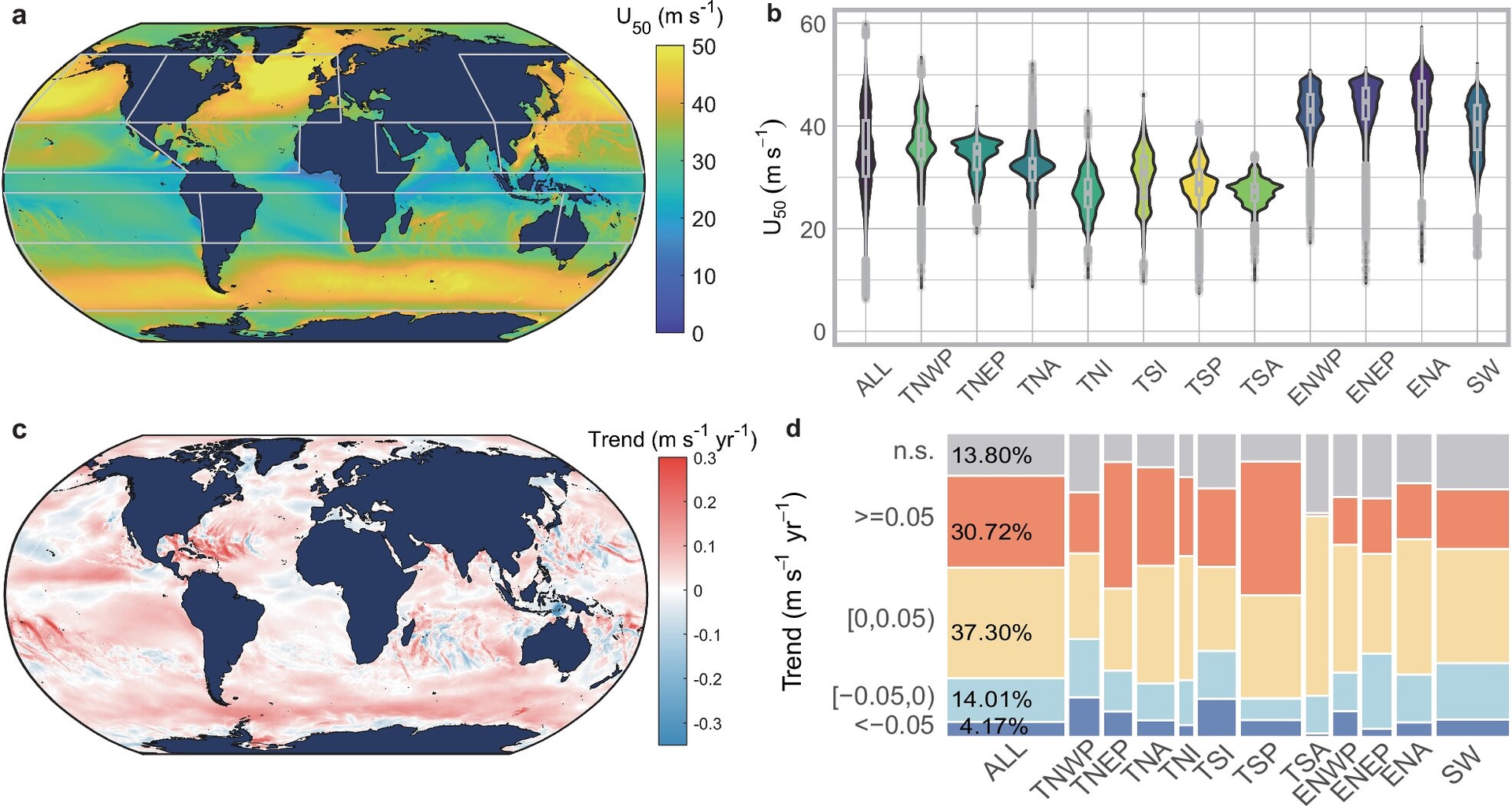Are offshore wind farms ready for new wind speeds?

Over the past 80 years, winds blowing across the oceans have become more intense due to climate change. This phenomenon raises questions about the resilience of turbines.
Climate change is disrupting global wind patterns . While some regions, such as inland northwestern Europe, are currently experiencing periods of unusual calm, elsewhere winds are picking up speed. Storms, especially offshore, are becoming more frequent and violent, raising questions about the reliability of offshore wind farms.
Of course, marine wind turbines are designed to withstand the challenging environmental conditions encountered at sea or in the ocean. However, the new climate pressures the planet is currently facing could add an unforeseen amount of mechanical stress.
The Intergovernmental Panel on Climate Change (IPCC) has stated that climate change will increasingly affect global aggregate wind speed, with average annual wind speeds projected to decline by 10% by 2100 (and with wide regional variations). This is a problem that land-based installations will have to contend with in particular, while offshore the challenge could be completely opposite.
Recent studies have highlighted how extreme ocean-level wind events are intensifying due to global warming. In particular, the strongest tropical cyclones , those with maximum wind speeds exceeding 50 m/s, are showing a significant acceleration trend. In a progressively warmer climate, both the frequency of such events and an approximately 3% increase in maximum daily wind speeds per degree of warming are expected in high-latitude regions.
Faced with these estimates, a group of researchers from the Eastern Institute of Technology in Ningbo and the Hong Kong Polytechnic University asked themselves a simple question: can offshore wind turbines withstand such conditions?
To characterize the maximum wind speed that a wind turbine can withstand during its operating life, a specific parameter is used: the reference wind speed (U ref ) . The International Electrotechnical Commission (IEC) uses the Uref to classify turbines into:
- Class I: U ref of 50 m/s
- Class II : U ref of 42.5 m/s
- Class III : U ref of 37.5 m/s
Designers and developers must ensure that the chosen turbine has a Uref parameter higher than the extreme wind expected for that location at least once in 50 years ( U 50 ).
The team of scientists used hourly ERA5 wind speed data at 100 meters above sea level from 1940 to 2023 and found a significant global increase in oceanic U50 . The parameter increased by 0.016 m/s per year, with upward trends evident in 62.85% of coastal regions.
This means that more than 40% of existing or planned offshore wind farms in Asia and Europe face wind speeds above the design threshold for Class III turbines.
“More than half of these wind farms are located in regions with an increasing U50 trend, a trend strongly associated with changes in tropical and extratropical cyclone activity due to global warming.”
“While this study primarily examines extreme wind speeds, we also evaluate trends in mean wind speeds to identify regions with higher wind potential and higher risk […] The ERA5 dataset reveals a modest but widespread increase in mean wind speeds across most ocean regions from 1940 to 2023, with the exception of the equatorial zones and the northern Indian Ocean.”
Read the study “ Increasing extreme winds challenge offshore wind energy resilience ” in Nature Communications .
Read also: Here are the new wind turbines that are not afraid of typhoons and hurricanes
rinnovabili



